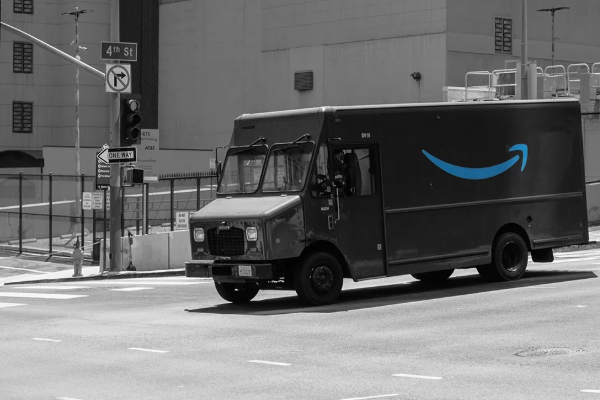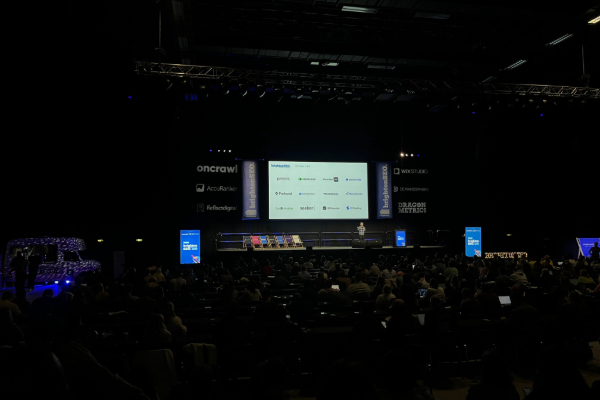How Will You Win a Share of the £3.63 Billion UK Black Friday Spend?
With rising CPCs, crowded promotions, and shifting buying behaviour on Amazon, price alone will not secure growth. Lessons from recent tentpole events, from Prime Day to last year’s extended Black Friday window, this guide aims to show how brands can prepare to win in Amazon’s most competitive moment.
Black Friday’s Battleground: How to Capture UK Shoppers in 2025
Black Friday and Cyber Monday are now firmly embedded in the UK retail calendar. What began as a US import has evolved into a multi-billion-pound moment for British shoppers, with consumer expectations rising year after year. According to Adobe Analytics, UK consumers spent £3.63bn online across Black Friday & Cyber 2024, with Black Friday alone accounting for £1.12bn.
This surge extended across the market, with retailers from Argos to John Lewis launching weeks of promotions. Yet Amazon maintained its dominance, accounting for around 30% of all ecommerce spend according to Statista, remaining a fan favourite among advertisers. During Black Friday, its scale, Prime fulfilment network, and retail media ecosystem draw the lion’s share of shopper attention. Crucially, Black Friday on Amazon is not just a weekend of deals but a full-funnel exercise, demanding strategic lead-in and lead-out planning to engage shoppers at every stage of their journey.
Plan, or Play Catch-Up
If there’s one constant in Q4, it’s this: the brands that plan early win. If you are not laying groundwork by early September, you are already playing catch-up. BFCM is not about showing up, it is about showing up ready.
Prime Day in July this year underlined this point. Amazon stretched the event across four days, but while traffic was strong, the additional days did not generate more overall volume, it simply spread demand thinner and shifted pacing. IMRG data showed that many UK shoppers began browsing across multiple retailers and categories well in advance, only pulling the trigger on purchases once the peak Prime Day window arrived. The recent shopper behaviour shows how consideration depth is evolving: consumers are weighing options longer, comparing across platforms, and waiting until the deal is right.
For BFCM, this means brands need a distinct strategy and budget pool for the four peak days while also maintaining visibility across the longer promotional window. It is no longer enough to rely on gut feel or last-minute adjustments. Decisions must be grounded in data, from audience insights to conversion paths, ensuring investment aligns with where shoppers are in their journey.
2024’s Key Lessons for Advertisers
- Rising CPCs Require Smarter Investment
CPCs climbed sharply across key categories during the 2024 peak season, particularly in gifting-led categories like beauty and baby. Industry benchmarks from Tinuiti highlight how CPCs rose by double digits in competitive categories, a trend mirrored on Amazon UK, where brands relying only on Sponsored Products often saw diminishing returns. By contrast, those who diversified into Sponsored Brands, Sponsored Display, and DSP retargeting secured a stronger share of voice, reflecting a path to purchase that has grown increasingly complex as consumers research more extensively and weigh multiple options before making decisions.
- Retail Readiness is Essential
Many brands struggled to convert hard-won clicks in 2024 due to under-optimised product detail pages. UK shoppers increasingly scrutinised reviews, ratings, and compare similar offerings before committing. Those with strong A+ content, high-quality imagery and video, and mobile-ready descriptions achieved far higher conversion rates. The RetailX Amazon UK 2024 report found that more than 70% of sessions take place on mobile, making mobile optimisation a non-negotiable for advertisers.
- New-to-Brand vs Short-Term ROAS
The most forward-looking UK advertisers in 2024 focused less on ROAS and more on customer acquisition. Amazon’s new-to-brand metrics, layered with DSP audience insights, give brands clarity on whether they were gaining incremental customers rather than recycling existing ones. For categories like beauty and gifting, this focus on growing customer lifetime value paid dividends in December.
- AMC Unlocks Data Sophistication
In 2024, many brands turned to Amazon Marketing Cloud (AMC) to move beyond surface-level reporting and build more sophisticated audience strategies. A common tactic was to identify “window shoppers” who viewed but did not purchase in October, then re-engage them with DSP campaigns during BFCM. This level of precision turned browsers into buyers once discounts landed.
AMC has also become more accessible with the rollout of an AI-powered SQL query generator, which lowers the technical barrier and enables a wider range of advertisers to extract actionable insights. By making it easier to explore paths to purchase, measure new-to-brand impact, and build custom audiences, AMC is no longer a niche tool for advanced analysts but a mainstream opportunity for advertisers to capitalise on in peak season.
- Flexibility Wins the Basket
Rigid budgets proved a liability in 2024. Some advertisers exhausted their daily caps well before the highest-converting evening hours, missing out on prime demand. By contrast, brands that kept buffer budgets and leveraged automated bidding tools (such as SKAI or Amazon’s dynamic bidding) were able to capture sales spikes in real time. AI-powered bidding solutions are also reshaping how advertisers respond to demand surges, allowing campaigns to adapt in real time without relying solely on manual intervention.
The lesson is clear: during BFCM, advertisers must stay on their toes. Consumer behaviour can shift by the hour, so teams need to monitor performance closely and be ready to adjust bids, budgets, and placements at speed. Agility is not a nice-to-have, it is often the difference between riding the surge and missing it.
Looking Ahead to Black Friday 2025
Cross-retailer awareness is rising, consideration cycles are lengthening, and shopper behaviour is evolving. Prime Day showed that consumers are happy to browse early, compare widely, and delay purchasing until the best deal appears. That means advertisers must meet them with visibility, clarity, and timing.
The urgency for 2025 is clear:
- Plan, plan, plan: If you are not prepared by September, you are already behind.
- Base decisions on data, not gut: Leverage AMC, retail analytics, and AI-driven optimisation.
- Segment strategies: Distinguish between the long promotional window and the four BFCM peak days.
BFCM is no longer a discounting exercise, it’s a full-funnel battleground where planning, agility, and data-driven precision separates the winners from the crowd.









